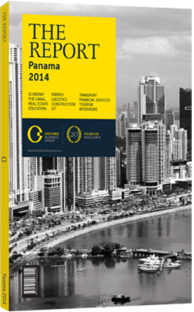Untapped abundance: Sector operators are beginning to create new ecotourism offerings
Although Panama is only slightly larger than Ireland, it is home to an abundance of biodiversity that has helped support the nascent ecotourism industry. Indeed, ranked 118th globally in terms of geographic area, Panama punched well above its weight in the World Economic Forum’s “Travel and Tourism Competitiveness Report 2013”, ranking 11th in overall natural resources, 18th in terms of the number of World Heritage Natural Sites, 18th in total number of known species and 30th for terrestrial biome protection.
Segment Growth
Having grown at an average rate of 12% over the past decade, the ecotourism segment was responsible for roughly one-quarter of Panama’s tourism market in 2012. The national investment promotion agency, Proinvex, predicts the segment will grow 16-19% per year in the short term, contributing roughly $700m to $900m annually to the gross national product and creating 55,000 to 80,000 new jobs. Although still in the early stages, the success of ecotourism in neighbouring Costa Rica provides a fitting example for what can be achieved in Panama. In fact the strategy employed by the Panama Tourism Authority (Autoridad de Turismo de Panama, ATP) revolves around developing synergies with its northern neighbour. The ATP’s Master Plan for Sustainable Tourism Development 2007-20 identifies three primary markets for ecotourism: North America, Europe and South America. It seeks to attract senior citizens, empty nesters and “DINKS” (Dual Income, No Kids) from North America, while in Europe the target audience is young couples and for South America it is a blend of the two. In addition to its two man-made UNESCO World Heritage Cultural Sites – the Casco Viejo district and the Portobelo-San Lorenzo fortifications – Panama boasts three World Heritage Natural Sites: Darién National Park, La Amistad International Park and Coiba National Park. Each park includes distinctive characteristics which aptly portray the massive amount of biodiversity found in Panama’s relatively modest borders. The country also includes an additional 111 protected areas.
Protected Areas
From 2008 to 2020 the National System of Protected Areas (Sistema Nacional de Áreas Protegidas, SINAP) was assigned a budget of $28m, according to the ATP’s long-term strategy. However, Panama also intermittently receives additional funds to ensure environmental sustainability. For example, for the period from July 2010 to June 2014, the Global Environment Facility allocated $13.5m for projects in Panama – $11m for projects aimed at supporting biodiversity, $2m for combating climate change and $500,000 to tackle land degradation.
Coiba National Park, which is located off the southwest coast of Panama, consists of Coiba Island and its rainforest, as well as 38 smaller islands and their marine areas. The park is an important breeding ground for a number of species and a popular scuba diving destination. La Amistad International Park, which straddles the Panama/Costa Rica border, protects the Cordillera de Talamanca, which is the highest and wildest non-volcanic range in the region and home to a variety of ecosystems not found elsewhere in the region, including subalpine páramo forests and oak. Encompassing the border region between Panama and Colombia, Darién National Park is a wilderness zone between the Americas and represents the only break in the Pan-American Highway, which would otherwise stretch from Alaska to Argentina. It is home to rainforest, swampland, mangrove forests and beaches.
New Offerings
Though oft associated with off-the-beaten-track, minimalist resorts, tour operators are increasingly merging the ATP’s vision for developing luxury tourism with its ecotourism attractions. An 800-acre, $100m luxury project with low-impact eco-residences and a resort, developed by Wildland Development, is but one example of touristic and real estate development with a eye on environmental sustainability. Another example of this strategy is found on the 400-acre private Isla Palenque, which is currently being developed into an “eco-luxury” resort and community featuring 200 private residences and a 100-room resort.
You have reached the limit of premium articles you can view for free.
Choose from the options below to purchase print or digital editions of our Reports. You can also purchase a website subscription giving you unlimited access to all of our Reports online for 12 months.
If you have already purchased this Report or have a website subscription, please login to continue.

